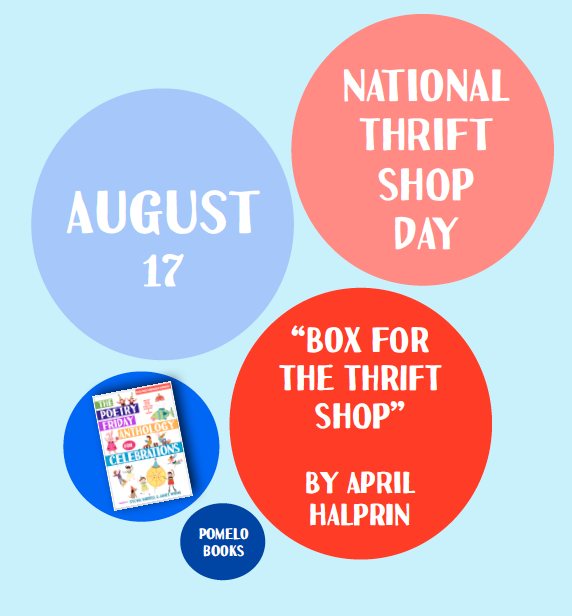It's time for the annual conference of the American Library Association, this time in San Francisco, California! I'm lucky enough to be presenting alongside an amazing panel, thanks to YALSA. Here's the lowdown:The WeNeedDiverseBooks movement challenges us to help young people connect with their passions, desires, and interests by embracing diversity. A panel of scholars, authors, and practitioners including Professors Sylvia Vardell and Antero Garcia, librarian Marianne Follis, and authors Janet Wong, Margarita Engle, and Lesléa Newman will discuss how diversity is key—in literature, media, and programming and in embracing and exploring questions of cultural and sexual identity.
Our program weaves together the perspective of scholars, authors, and practitioners combining the expertise and context of each unique setting, highlighting the potential for collaboration. In addition, the focus on diversity is crucial, examining the spectrum of cultural and sexual identity in literature, media, and programming showing how a cross-cultural, cross-platform focus meets the needs of today’s teens in meaningful ways.
If you're at the conference, come join us!
A Select Bibliography of Books by Presenters
1. Dietzel-Glair, Julie and Follis, Marianne. 2015.
Get Real with Storytime: 52 Weeks of Early Literacy Programming with Nonfiction and Poetry. Libraries Unlimited.
2. Engle, Margaret. 2006. The Poet Slave of Cuba. Holt.
3. Engle, Margarita. 2008. The Surrender Tree. Holt.
4. Engle, Margarita. 2009. Tropical Secrets: Holocaust Refugees in Cuba. Holt.
5. Engle, Margarita. 2010. Summer Birds: The Butterflies of Maria Merian. Holt.
6. Engle, Margarita. 2010. The Firefly Letters: A Suffragette's Journey to Cuba. Holt.
7. Engle, Margarita. 2011. Hurricane Dancers: The First Caribbean Pirate Shipwreck. Holt.
8. Engle, Margarita. 2012. The Wild Book. Houghton Mifflin.
9. Engle, Margarita. 2013. Mountain Dog. Holt.
![]()
10. Engle, Margarita. 2013.
The Lightning Dreamer. Houghton Mifflin Harcourt.
11. Engle, Margarita. 2014. Silver People: Voices from the Panama Canal. HMHarcourt.
12. Engle, Margarita. 2015. Drum Dream Girl: How One Girl’s Courage Changed Music. Houghton Mifflin Harcourt.
13. Engle, Margarita. 2015. Enchanted Air: Two Cultures, Two Wings: A Memoir. Atheneum.
14. Engle, Margarita. 2015. Orangutanka: A Story in Poems. Holt.
15. Engle, Margarita. 2015. The Sky Painter: Louis Fuertes, Bird Artist. Two Lions.
16. Garcia, Antero and Haddix, Marcelle. 2015. “Reading YA with ‘Dark Brown Skin': Race, Community, and Rue’s Uprising.” ALAN Review, (Winter, 2015).
17. Garcia, Antero and Middaugh, Ellen. 2014. “Lost, Sweaty, and Engaged in Dialogue: The Civic Opportunities of Geospatial Play” in #youthaction: Becoming Political in the Digital Age edited by Ben Kirshner and Ellen Middaugh. Information Age Publishing.
![]()
18. Garcia, Antero and Middaugh, Ellen. 2015. “Race to the White House.” Civic Media Project. Accessed at http://civicmediaproject.org/works/civic-media-project/racetothewhitehouse
19. Garcia, Antero. 2013. Critical Foundations in Young Adult Literature: Challenging Genres (Critical Literacy Teaching: Challenging Authors and Genre). Sense Publishers.
20. Garcia, Antero. 2014. Teaching in The Connected Classroom (DML Research Hub Report Series on Connected Learning Book 3). Digital Media and Learning Research Hub.
21. Mirra, Nicole; Garcia, Antero and Morrell, Ernest. 2015. Doing Youth Participatory Action Research: Transforming Inquiry with Researchers, Educators, and Students (Language, Culture, and Teaching Series). Routledge.
22. Newman, Lesléa and Dutton, Mike. 2011. Donovan’s Big Day. Tricycle Press.
23. Newman, Lesléa and Ferguson, Peter. 2007. The Boy Who Cried Fabulous. Tricycle Press.
![]()
24. Newman, Lesléa. 1996.
Fat Chance. PaperStar/Putnam & Grosset.
25. Newman, Lesléa. 1997. Still Life with Buddy. Pride & Imprints.
26. Newman, Lesléa. 2003. Write from the Heart. Ten Speed Press.
27. Newman, Lesléa. 2004. Hachiko Waits. Holt.
28. Newman, Lesléa. 2005. Jailbait.
Random House.
29. Newman, Lesléa. 2014. Here is the World: A Year of Jewish Holidays. Abrams.
30. Newman, Lesléa. 2015. Heather Has Two Mommies. Candlewick.
31. Newman, Lesléa. 2015. I Carry My Mother. Headmistress Press.
32. Newman, Lesléa. 2012. October Mourning: A Song for Matthew Shepard. Candlewick.
33. Vardell, Sylvia and Wong, Janet. Eds. 2011. Gift Tag. PoetryTagTime.com.
34. Vardell, Sylvia and Wong, Janet. Eds. 2011. P*TAG. PoetryTagTime.com.
35. Vardell, Sylvia and Wong, Janet. Eds. 2011. PoetryTagTime. PoetryTagTime.com.
36. Vardell, Sylvia and Wong, Janet. Eds. 2012. The Poetry Friday Anthology K-5. Pomelo Books.
37. Vardell, Sylvia and Wong, Janet. Eds. 2013. The Poetry Friday Anthology for Middle School. Pomelo Books.
38. Vardell, Sylvia and Wong, Janet. Eds. 2014. The Poetry Friday Anthology for Science. Pomelo Books.
39. Vardell, Sylvia and Wong, Janet. Eds. 2015. The Poetry Friday Anthology for Celebrations: Holiday Poems for the Whole Year in English and Spanish. Pomelo Books.
40. Vardell, Sylvia. 2007. Poetry People: A Practical Guide to Children’s Poets. Libraries Unlimited.
41. Vardell, Sylvia. 2012. The Poetry Teacher’s Book of Lists. Pomelo Books.
42. Vardell, Sylvia. 2014. Poetry Aloud Here 2: Sharing Poetry with Children (Second Edition).American Library Association.
43. Wong, Janet S. 1994. Good Luck Gold and Other Poems. McElderry Books.
![]()
44. Wong, Janet S. 1996/2008.
A Suitcase of Seaweed, and Other Poems. Booksurge.
45. Wong, Janet S. 1999. Behind the Wheel: Poems about Driving. McElderry Books.
46. Wong, Janet S. 1999. The Rainbow Hand: Poems about Mothers and Children. McElderry Books.
47. Wong, Janet S. 2000. Night Garden: Poems from the World of Dreams. McElderry Books.
48. Wong, Janet S. 2003. Knock on Wood: Poems about Superstitions. McElderry Books.
49. Wong, Janet S. 2003. Minn and Jake: Farrar, Straus & Giroux.
50. Wong, Janet S. 2007. Twist: Yoga Poems. McElderry Books.
51. Wong, Janet. 2008. Minn and Jake’s Almost Terrible Summer. Farrar, Straus & Giroux.
52. Wong, Janet. 2011. Once Upon A Tiger: New Beginnings for Endangered Animals. OnceUponaTiger.com.
53. Wong, Janet. 2012. Declaration of Interdependence: Poems for an Election Year. PoetrySuitcase.
Special thanks to Candlewick Press, Simon & Schuster, and Pomelo Books for their support!
We have an amazing slideshow and our session will be audio-taped plus we have heaps of freebies to give away too. I hope to share some nuggets from our session later-- and attend the Poetry Blast and report on that next week too. Meanwhile, happy Poetry Friday, everyone! Head on over to Carol's Cornerwhere she is hosting our gathering this week.














































































